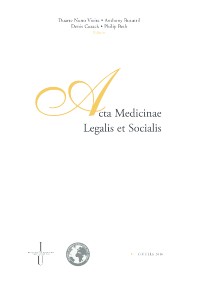Please use this identifier to cite or link to this item:
https://hdl.handle.net/10316.2/31790| Title: | A bayesian assessment of unexplained fracture as a forensic test of child ab use: quantification of uncertainty using the Error Odds approach | Authors: | Freeman, M. D. | Issue Date: | 2010 | Publisher: | Imprensa da Universidade de Coimbra International Academy of Legal Medicine |
Journal: | http://hdl.handle.net/10316.2/2632 | Abstract: | All forensic opinions can be characterized as probabilities, and all forensic methods upon which the probabilities are based can be described as tests of relevant evidence. Probability can also be described as a way to quantify uncertainty (as [1-probability] = uncertainty) and thus a means of assessing the validity of a forensic opinion. In the present paper a method of quantifying the uncertainty in forensic test results called the Error Odds is described. The Error Odds is a Bayesian metric that allows for calculation of the degree of uncertainty in a test result by using ordinary clinical terms and concepts. As an example of how the method can be easily applied to a common test result, the Error Odds calculation is used to quantify the uncertainty in the use of unexplained pediatric fracture as a test for child abuse. It is suggested that an Error Odds of 10:1 is the minimum threshold for the consideration of a single test result as evidence of guilt in a criminal proceeding | URI: | https://hdl.handle.net/10316.2/31790 | ISBN: | 978-989-26-0173-1 (PDF) | DOI: | 10.14195/978-989-26-0173-1_32 | Rights: | open access |
| Appears in Collections: | Acta medicinae legalis et socialis |
Files in This Item:
| File | Description | Size | Format | |
|---|---|---|---|---|
| 31-_acta_medicinae_legalis.pdf | 864.82 kB | Adobe PDF |  |
Items in DSpace are protected by copyright, with all rights reserved, unless otherwise indicated.
